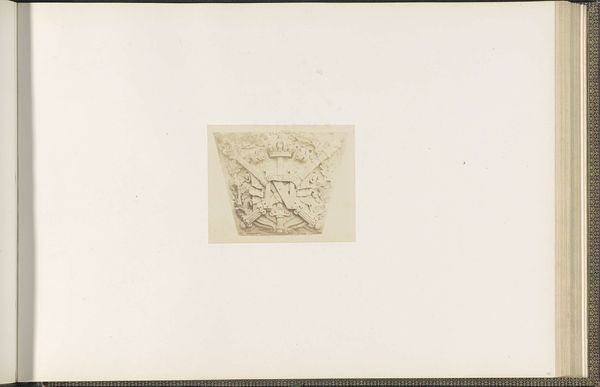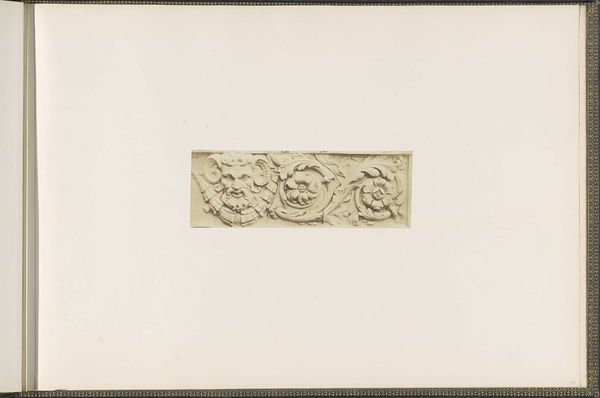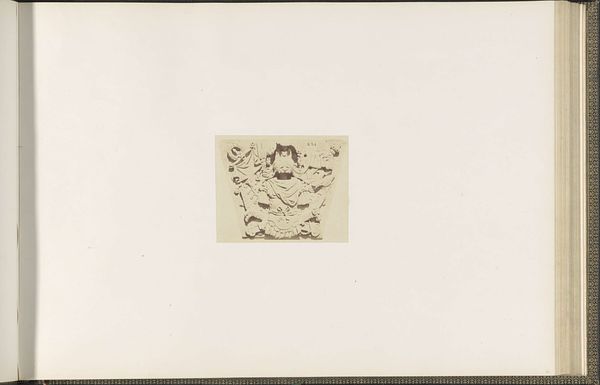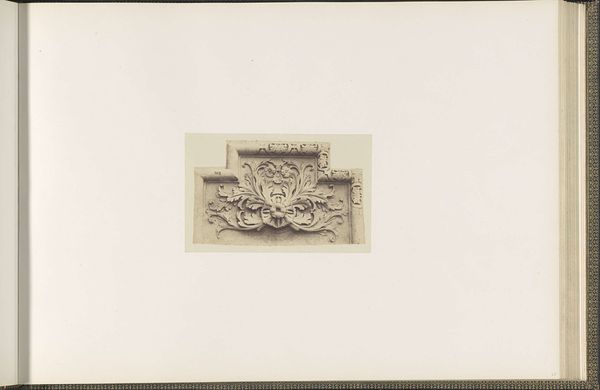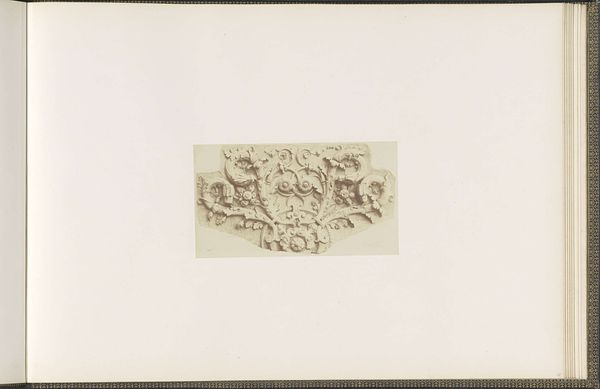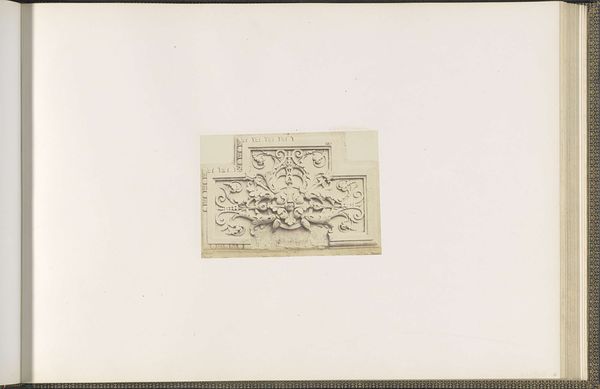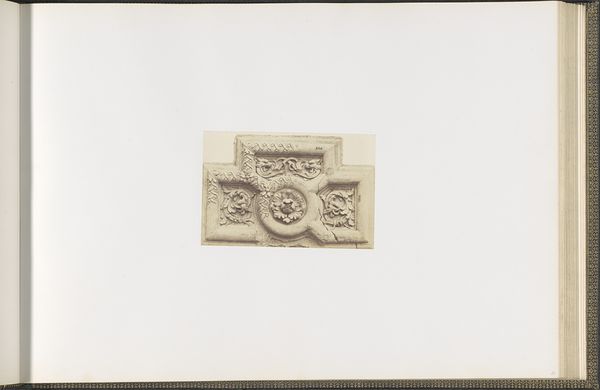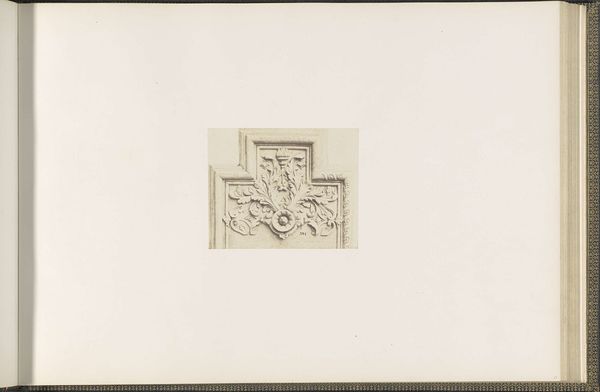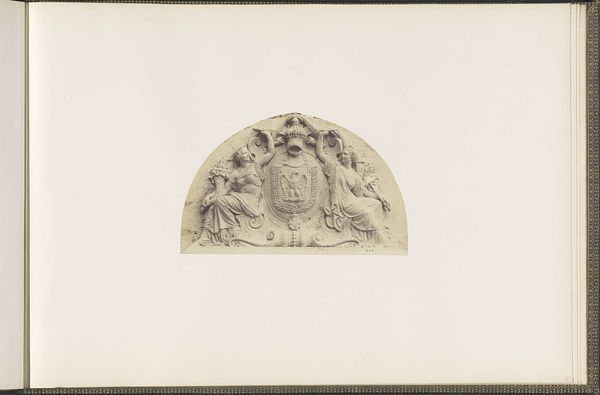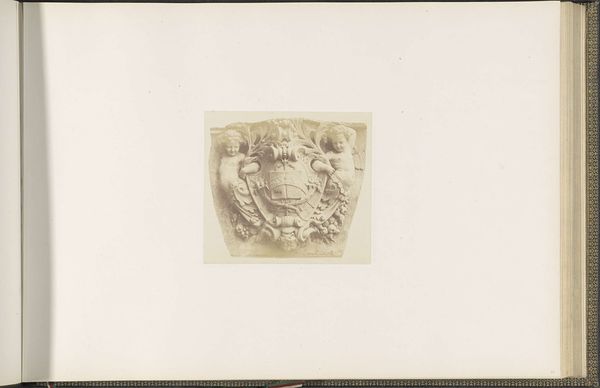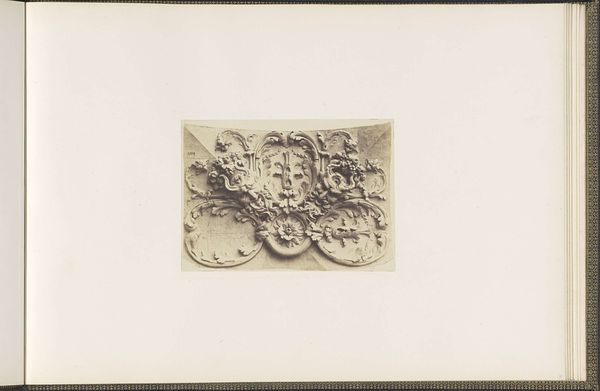
Gipsmodel voor een sluitsteen van het Palais du Louvre door Duvieux c. 1855 - 1857
0:00
0:00
print, relief, photography, plaster
#
neoclacissism
# print
#
relief
#
photography
#
geometric
#
plaster
Dimensions: height 376 mm, width 523 mm
Copyright: Rijks Museum: Open Domain
Curator: This photogravure captures Duvieux’s plaster model for a keystone intended for the Palais du Louvre, dating back to 1855-1857. It's a glimpse into the Parisian construction boom of the era, now held in the Rijksmuseum's collection. Editor: My initial impression is how self-contained this sculptural fragment feels despite representing something grand like the Louvre. It has a delicate and somewhat ethereal presence, even in this printed format. Curator: It speaks to the interesting relationship between craft and mass production during that time. The model was meticulously sculpted by hand, undoubtedly involving a specific skill set and then captured through this new photogravure printing process that aimed for broad distribution. The photograph mediates our experience with the actual plaster object. Editor: Absolutely. The keystone at the centre feels heavy with dynastic symbolism; a coat-of-arms flanked by classical figures. This use of emblems creates a visual vocabulary that links the new construction with historical power structures. We are really prompted to think about continuity and legitimacy in post-revolutionary France. Curator: Indeed, consider the very purpose of a keystone! A structural element, certainly, but also symbolic. Its physical location at the apex of an arch turns it into a literal linchpin of architectural stability and by extension, governmental stability as well. Editor: The botanical motifs around the coat of arms are also significant. Note their abundance—fertility and growth. The image itself acts as a type of memory, recording aspirations and the identity that this monument hoped to project. It goes beyond basic Neoclassical formalism. Curator: I agree, looking at it through the lens of photographic reproduction and its own distribution tells another story. How was it displayed, archived, purchased? Who could access this fragment of future architecture? Editor: A fascinating way to reflect upon permanence through something so seemingly ephemeral. The shadows preserved here capture light just once—in the studio or gallery. So much intention condensed in just this tiny print! Curator: Exactly. It transforms our understanding of Duvieux’s design into a wider cultural document of the period's material concerns. Editor: A little token evoking layers of cultural encoding then; certainly a memorable glimpse of symbolic weight and historic record-keeping.
Comments
No comments
Be the first to comment and join the conversation on the ultimate creative platform.
